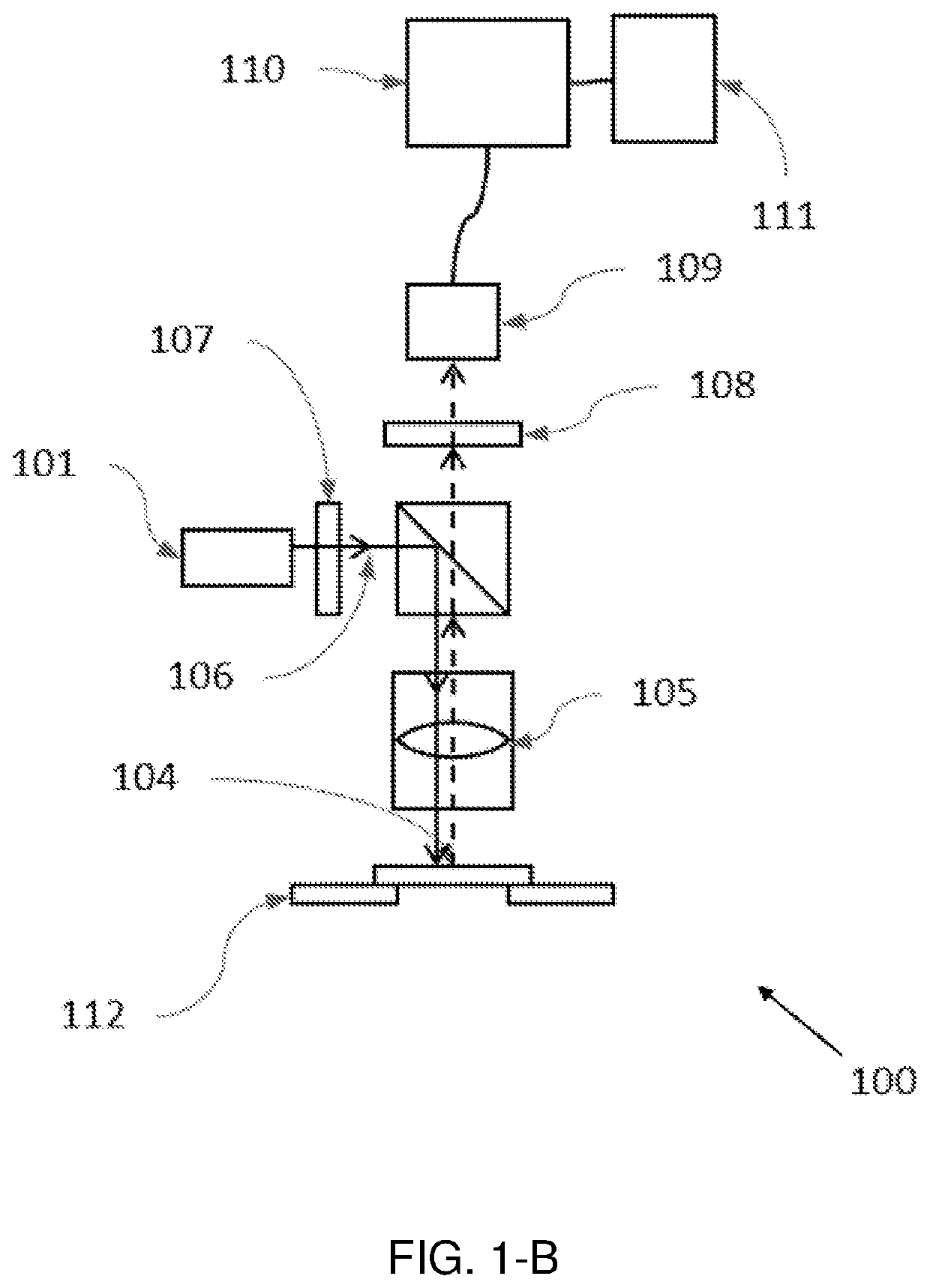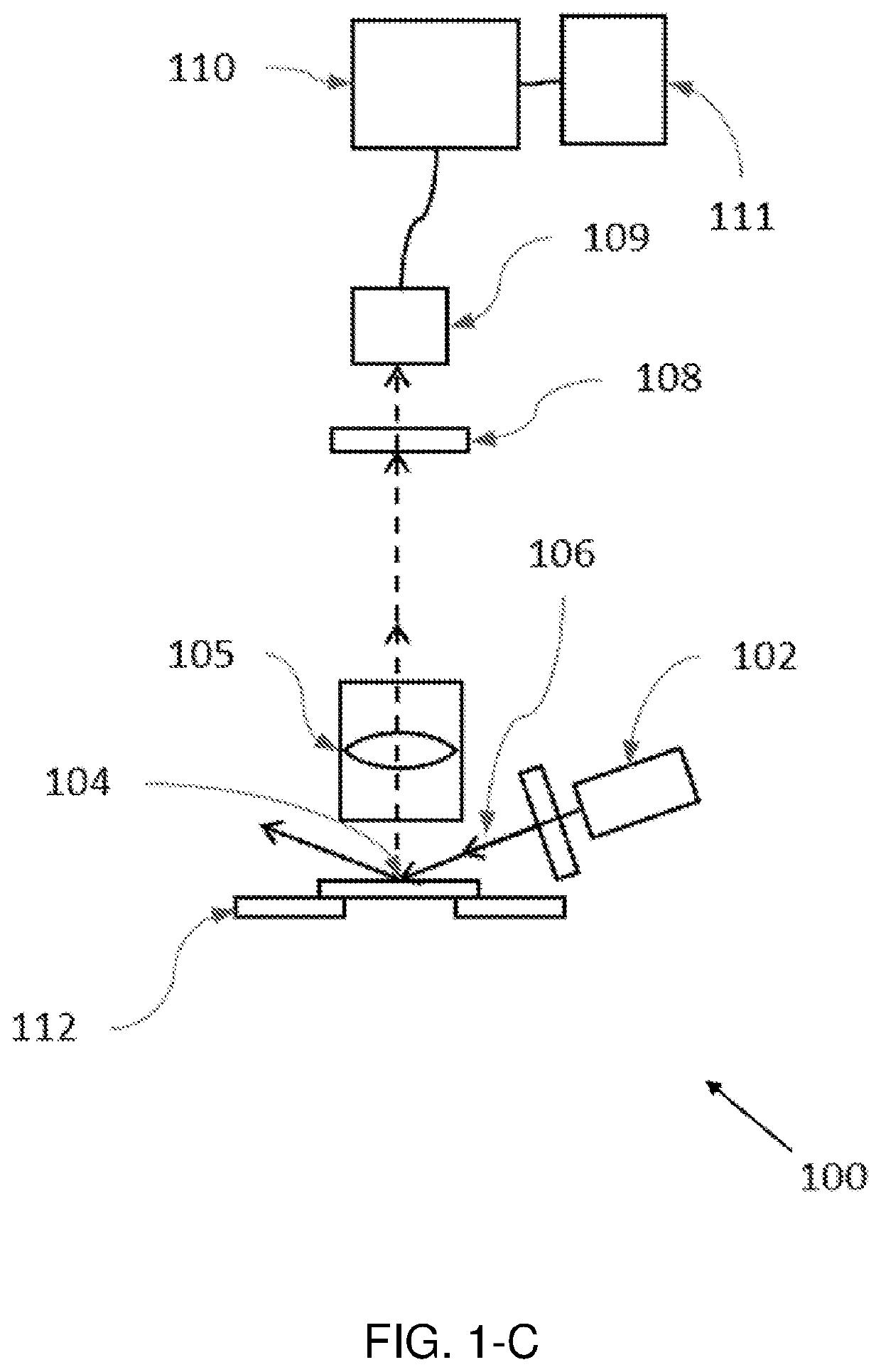Hyperspectral quantitative imaging cytometry system
- Summary
- Abstract
- Description
- Claims
- Application Information
AI Technical Summary
Benefits of technology
Problems solved by technology
Method used
Image
Examples
Embodiment Construction
[0103]A hyperspectral quantitative imaging cytometry system (100) according to the invention is schematically shown in FIGS. 1-A to 1-E.
[0104]The system (100) comprises an observation region (104), comprising a sample holder (112) configured to hold one or more solid-phase samples. In an embodiment the sample holder is configured to retain at least one solid phase sample support, each support being adapted to contain an immobilized sample, preferably a biological sample. These solid phase sample supports may be of different materials, preferably crystalline and transparent to light (e.g. glass or plastic), and may have different shapes and sizes, such as rectangular shape (e.g. a microscope slide).
[0105]The biological samples may be of human, animal, fungal or plant origin and may be used alone or in combination with a molecular tag.
[0106]Preferably, a molecular tag is used to reveal the components of the biological sample. The reporter part of the molecular tag may luminesce or sel...
PUM
 Login to view more
Login to view more Abstract
Description
Claims
Application Information
 Login to view more
Login to view more - R&D Engineer
- R&D Manager
- IP Professional
- Industry Leading Data Capabilities
- Powerful AI technology
- Patent DNA Extraction
Browse by: Latest US Patents, China's latest patents, Technical Efficacy Thesaurus, Application Domain, Technology Topic.
© 2024 PatSnap. All rights reserved.Legal|Privacy policy|Modern Slavery Act Transparency Statement|Sitemap



